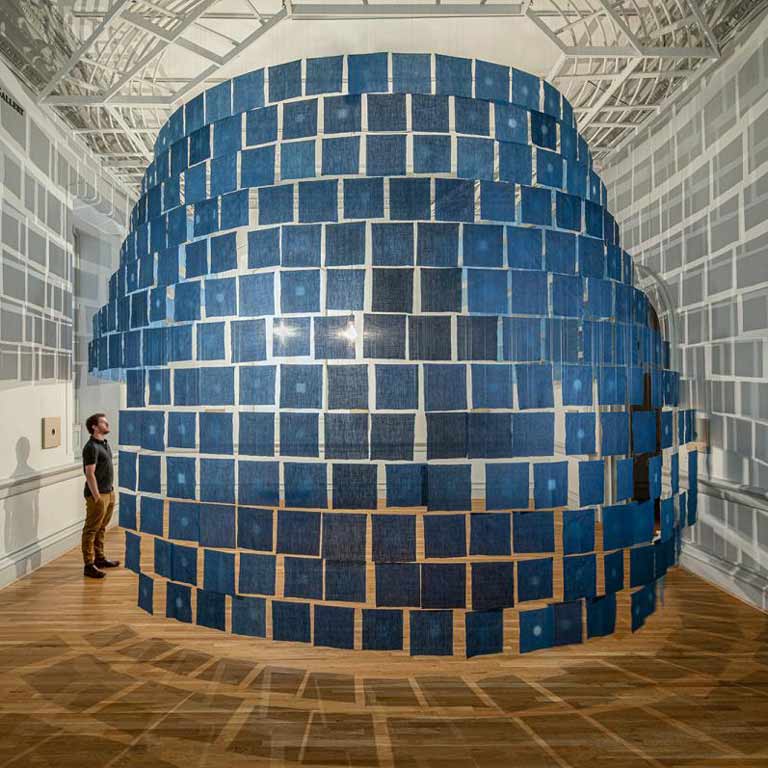Source: News at IU Bloomington
Pieces of indigo cloth that have traveled the world have a temporary home in the Smithsonian American Art Museum's Renwick Gallery, where an Indiana University Eskenazi School of Art, Architecture + Design associate dean is one of four featured artists.
Rowland Ricketts' "Ai no Keshiki -- Indigo Views" features 450 pieces of indigo cloth that have faded over time. The installation is on display as part of the Smithsonian American Art Museum's "Forces of Nature: Renwick Invitational 2020" through June 27.
The project started in Tokushima, Japan, where Ricketts had apprenticed with local indigo growers and dyers. Indigo has been Ricketts' primary medium for the past two decades, and he uses historical processes to create contemporary textiles that span art and design.
The Tokushima prefectural government invited Ricketts to create a public art installation using indigo. He placed pieces of indigo cloth in boxes that contained a small hole for light exposure and sent them to people from nine countries. They lived with the cloth for five months in 2017, and each piece of indigo returned looking different.
"Over those five months, the cloth faded," Ricketts said. "I think a lot of times in museum settings, fading is considered a negative thing. But I really think of it differently, more like photographic exposure -- light is coming into the box and hitting the cloth and capturing people's live and experiences."
Ricketts worked with longtime collaborator Norbert Herber, senior lecturer and unit director of media arts and production in The Media School at IU, to bring sound to the art installation. Herber has recorded hundreds of sounds of historical indigo production, including growing, making the dye and dying the cloth. He processed the sounds in a way that mimics the fading of the indigo. Like exposure to light left a lasting impression on the cloth, he hopes the installation will have an impact on those who visit the Renwick Gallery.
"I really hope that everyone feels welcome to stay in the space for as long as they like, to unplug from the troubles of their daily life and to just be able to take one or more steps back and just be there and reflect on how everything they see and hear is the product of the natural world acting on other materials over a long period of time," Herber said. "That process is something that is around us every single moment of every single day."
The lighting of the installation also plays on the theme of fading. The intensity of the light changes over time based on global data it's tied to.
Ricketts said it's an honor being featured in the Renwick Gallery, although COVID-19 limits how many people can visit. But he said the timing, with the pandemic and nationwide push for racial justice, makes the art especially relevant.
"On many levels, this work is about the individual and the whole," he said. "When the cloth is hung in the space and someone moves through the space, the slightest movement of air causes the cloths to breathe. Fading is very much like breathing; it's this exchange of light and air -- in and out, back and forth.
"All of this lends a sense of breath and breathing to the work, and in our current moment, I don't think you can put an artwork that references breath and breathing like this one does in Washington, D.C., right across from the White House and not invoke question about the inequitable access in our own country to the basic human need to breathe freely."


